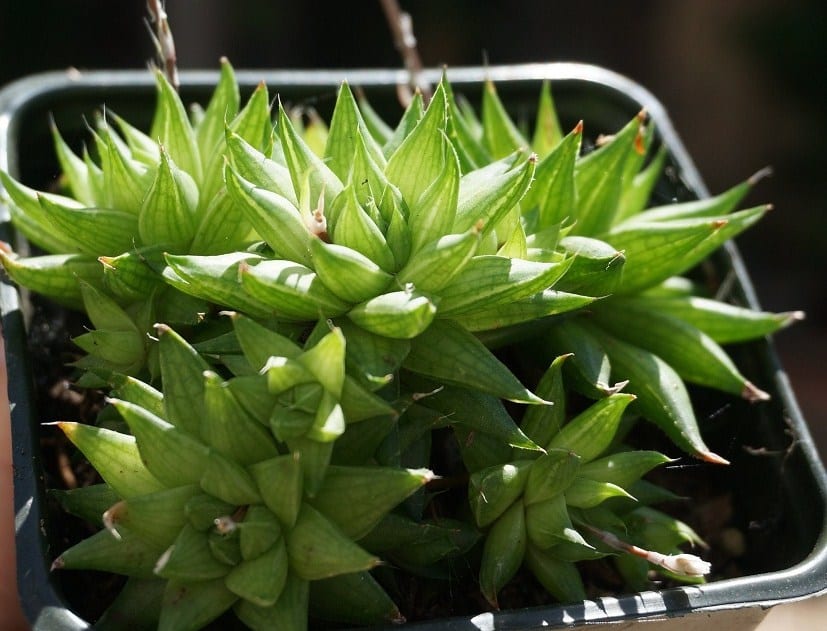
La haworthia cooperi it's a very striking plant native to the South African climate that surely generates a positive impact on its ornamental use. The particular characteristics of this plant with rosette-shaped leaves do not go unnoticed and attract attention both for its exotic beauty and for its unique appearance.
If you want to highlight any area of the home with a decoration of plant origin, this plant is the best option. They are plants that do not require more care and in spring time it adorns its appearance with its particular flowers. The best accessory for this plant is a pot that highlights its qualities and beauty.
From
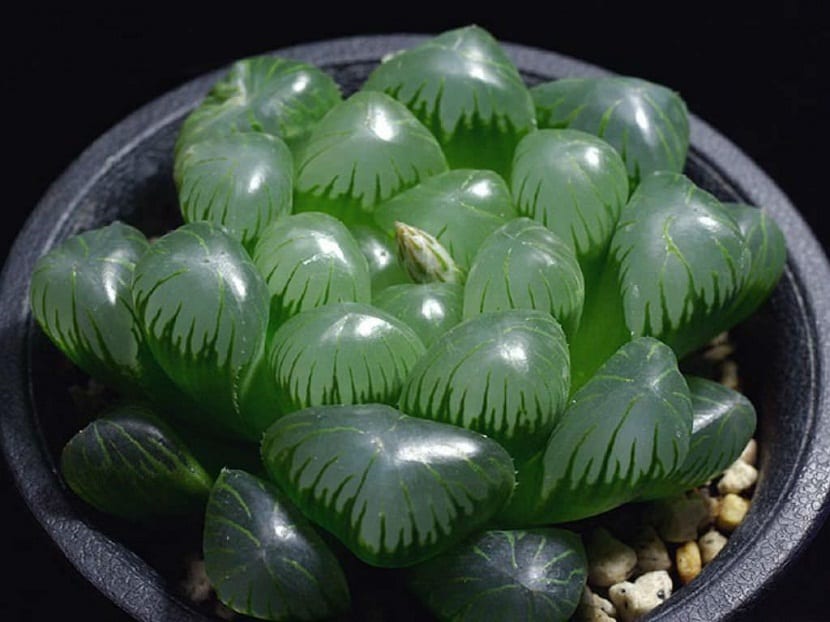
La haworthia cooperi is a species of plant native to South Africa of the Xanthorrhoeaceae family, belonging to the genus haworthia. Its specific provenance is in Namibia, Lesotho, Swaziland and Mozambique, originating and reproducing easily thanks to the summer rains of the South African zone. The name is attributed to plants with roots in the form of bulbs or tubers of radical leaves. On the other hand, the cooperi epithet is placed in honor of James Graham Cooper founder of the American Museum of Natural History.
Appearance and characteristics of the haworthia cooperi
La haworthia cooperi is a perennial, succulent or crass, this means that its leaves are thick in the form of rosettes. They can have between 30 and 40 oblong and lanceolate leaves Very diaphanous light green color with convex underside and flat upper surface. It produces beautiful flower stems that do not exceed 20 centimeters from where 1 cm whitish flowers sprout.
They bloom in spring to summer with a simple inflorescence pendulum about 30 cm long. The petals are attached to most of the floral tube. The whitish of the petals has shades of green to brown or bluish green. The growth of these plants is slow and the leaves are translucent. This feature allows light to pass through the cooperi and has a pattern that makes it attractive. If they are very exposed to sunlight, the leaves turn an orange color.
Cultivation and care
This plant can be obtained through seeds, by suckers or by plant reproduction. Of the two forms it is relatively easy to grow them and they do not require extreme care.
For multiplication by seed, a container 20 cm in diameter by 5 cm deep is required. It should have holes and is filled with a mixture of black peat with river sand in a 50-50 ratio. Then the soil is moistened and the seeds are spread with enough space between them and culminated with a layer of black peat and the container is placed in a location with indirect light. After two or three weeks it will germinate.
When sowing the haworthia cooperi by reproduction of the plant proceeds as follows. The suckers are separated from the plant when they are between three and four centimeters and placed in individual pots with the same soil mixture that was used for the seeds.
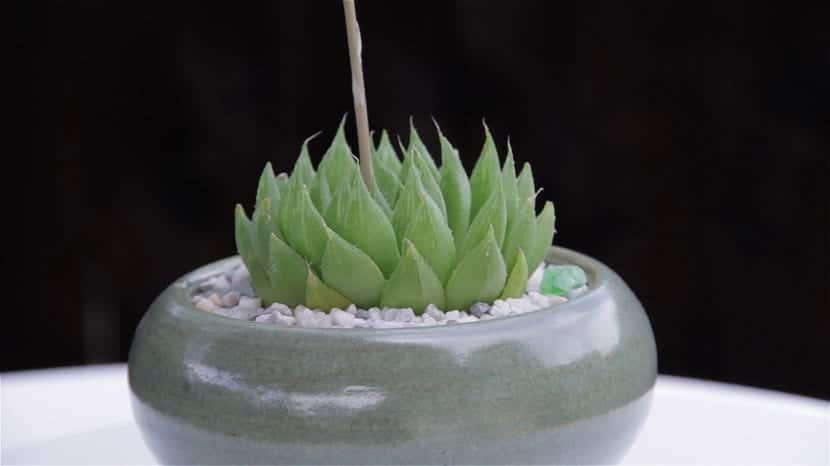
The pots can be placed in gardens, patios or terraces. If they get used to direct sunlight they can be exposed to radiation all day. They have no problem with sandy even rocky soils and even perlite, volcanic clay, black peat can also be used and facilitate the soil to have good drainage.
The watering of the plant is carried out twice a week in spring and summer seasons. It decreases in the fall and for winter, if it is frosty season, watering them once a month will be enough. An important fact is that you should always water at the root and never on the leaves as they can burn or rot. In irrigation it is important to understand that the warmer the climate, the more drained the land should be.
This plant grows slowly, but constantly unless the temperature is below 15 ° C or above 35 ° C. You need regular compost between the spring and summer seasons, never fall or winter. You can choose a special product for succulents or cacti. The lowest temperature that the plant can withstand is -3 ° C and protection against hail is imperative especially while it is young.
The best time to plant or transplant is at the end of the winter season as long as the risks of frost have passed. While young it is transplanted every two years and when reaching its final size, the substrate is renewed every three or four years. It does not require pruning, only the withered leaves are eliminated.
Management
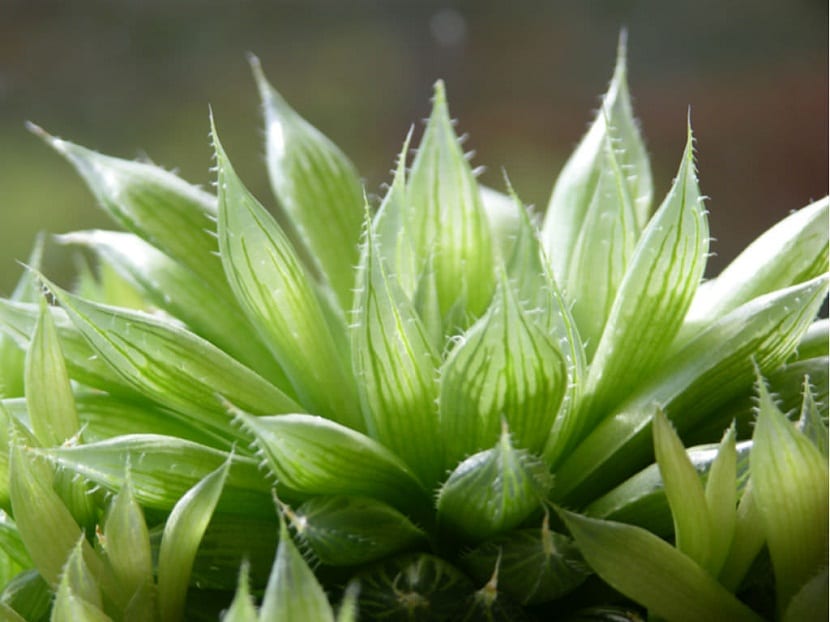
All the haworthia cooperi They are very healthy plants and do not usually cause problems as far as pests are concerned, their leaves being an attractive food for the snails. To avoid the attack of these mollusks that may well become undesirable parasites, containers with beer can be placed near the plants; only the smell will drive them away.
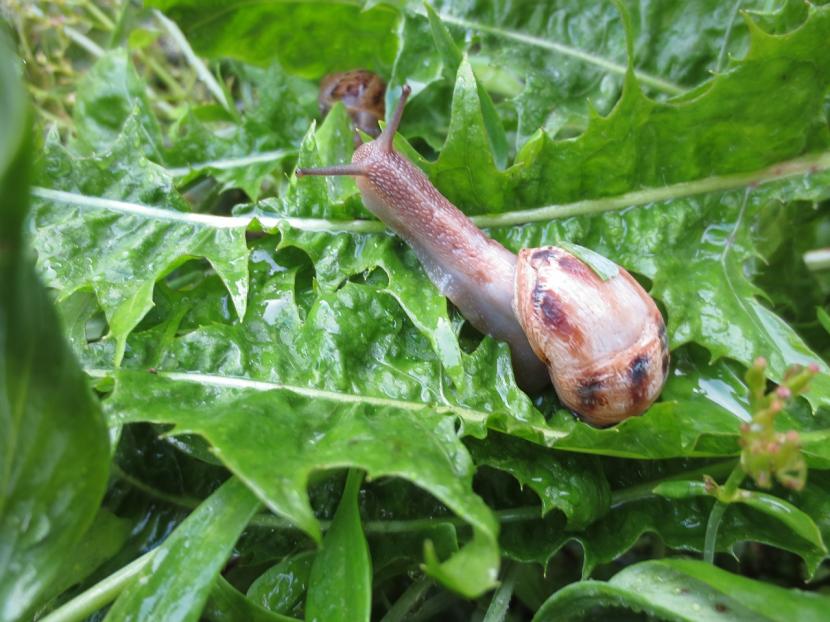
You can also make an effective garlic infusion. It will be enough to boil four cloves of garlic in two cups of water, it is expected to cool down and placed in a spray bottle. The liquid is spread over the surface of the substrate (never directly on the plant) and will keep snails and slugs away. On the other hand, and if it is attacked by the cottony mealybug, the ideal is to apply the appropriate insecticide.
In hot climates such as the tropics, the main problem with Haworthia cooperi is the bacteria Erwinia carotobora. If it is not controlled quickly, it will only take a few weeks to eliminate the plant. This bacterium enters the root system so it is necessary to be vigilant. The best way to get rid of the bacteria is by digging up the roots, cutting the lesions with a red-hot knife to cauterize. The roots are then placed in a chlorine solution to completely disinfect and prevent it from spreading again.
Well cared for, this is a very attractive plant and highly appreciated at an ornamental level. Its size is practical and allows it to be placed in any space. The shape of its leaves added to the texture and luminosity give it characteristics that make it practically compatible with any decorative style. The level of care is not high and they always make an excellent impression.